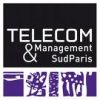 |
Dr. Bin GuoSchool of Computer Science Xi'an, Shaanxi, 710129, P. R. China Email: guobin.keio(AT)gmail.com |
|
|
|
A summary This research mainly addresses the robustness of wireless sensor networks, where we proposed an object-relation based mechanism to deal with fallible sensors (e.g., sensor blockage, sensor is broken or out of buttery) in context-aware systems.
There are several reasons that may cause errors to sensor-based systems: (1) sensor faults (sensor is broken or has a dead battery); (2) limited coverage or sensor blockage (as shown in the above figure, Book-C's ultrasonic singal is blocked by Book-A and becomes a hidden object).
In Sixth-Sense, hidden objects are detected using a set of user-defined rules (written in the format of SWRL, a language that is intended to be the rule language of the Semantic Web). The rules are mainly abstracted from common sense knowledge and various physical relations among objects. Following we use an example to show how common sense knowledge works on hidden-object detection. In the example shown in the first figure, Book-C is a hidden object (because of sensor blockage). By analyzing the physical relations (utilizing the 3D location data from sensors) between the two smart objects, Book-A and Table-B, we can infer that Book-A is not placed directly on the desktop because there is a height difference between them, then common sense indicates that there must be something between Book-A and the desktop; however, by executing the rules for spatial relations among objects, we find that no other objects is located under Book-A, so we may conclude that there is a hidden object. Sixth-Sense proposed an interesting but useful way for detecting uncertainties in ubiquitous computing environments. Currently there are ten more rules created for dealing with hidden objects under different situations, which explores diverse physical relations among everyday objects, like spatial relations, force relations and motion relations. For more details about this, please refer to the related papers listed below. Related Publications 1. Sixth-Sense: Context Reasoning for Potential Objects Detection in Smart Sensor Rich Environment [PDF] 2. Home-Explorer: Search, Localize and Manage the Physical Artifacts Indoors [PDF] 3. Home-Explorer: Ontology-based physical artifact search and hidden object detection system [PDF]
Please see videos at these links: Video-1: Hidden-object-01 Video-2: Hidden-object-02 Video-2: Hidden-object-03 Last updated: Mar. 31, 2009. |
|





